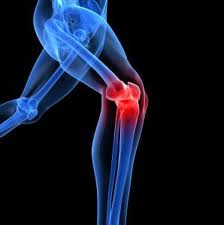Pain Myths
by Jay Armstrong - June 2012
Much of what we believe of about pain is often incorrect. Pain myths vary from family to family and from culture to culture. Understanding the truth about pain can help us develop a healthy, pain-free, athletic body.
| Much of what we believe of about pain is often incorrect. Pain myths vary from family to family and from culture to culture. Understanding the truth about pain can help us develop a healthy, pain-free, athletic body. |
|
 |
Myth #1 - If it hurts a lot, it must really be broken. Wrong. Have you ever been working in a garden and cut yourself or developed a blister and you didn't even know it? In contrast have you ever noticed how badly a paper cut hurts? Emergency room patients with gunshot wounds or other very serious injuries often report little or no pain. The take-away is that lots of damage may be associated with no pain and conversely lots of pain can be associated with no tissue damage. There is not necessarily a direct correlation between tissue damage and the pain experience.
Myth #2 - If my knee (or other body part) is hurting, there must be something "wrong" with my knee (or other body part). Not necessarily. While this is usually true with trauma (for example your thumb hurts if you hit it with a hammer) it is not always true with chronic pain. Restricted movement in the neck can cause shoulder or elbow pain. Shoes that make you walk funny can cause knee pain. The take-away is that if your elbow hurts you might not need elbow surgery. In fact, if the cause of the elbow pain is not the elbow, surgery is unlikely to fix the problem!
Myth #3 - The pain in my foot (or other body part) is caused by the nerves in the foot and the sensory input from the foot. Not necessarily. If you step on a sharp object this may be true, but consider the well-documented case of phantom limb pain. In this case, the person continues to experience pain in a limb that has been amputated. The take-away is that pain is an experience that resides in the brain. It is the result of sensory input combined with brain's ability to interpret that information. If we can change the way the brain interprets the sensory input signals we can change the pain experience.
Myth #4 - The crunchy noise in the joint is arthritis and it is supposed to hurt. Not true. Do you have any other joints (like your neck, back, or shoulder) that crunch, pop, or make noise when you move them? Do they all hurt? Does it hurt when you crack your knuckles? Noise is noise. Pain is pain. They are not synonymous.
Myth #5 – The pain isn’t really bad so I can just ignore it. I have a high pain tolerance. Not. Pain cannot be ignored. You will make compensating movements as a result of chronic pain. If you ignore chronic pain long enough the pain experience will generally increase. Pain is one of the ways that the brain can get your attention to “do something differently�?. If you do not address the issue, the brain will try harder to get your attention. This will mean fatigue, restricted range of motion, reduced strength, or MORE PAIN. Do not try to ignore pain. It is an important signal from your body.
| Myth #6 – Since I have chronic pain in that joint I should not move it. Wrong! Our bodies are designed to move. In fact, there is very little blood flow in the joints. The joint capsule is filled with fluid that is largely transported through movement. So, if a joint is painful, it may very well need more movement and not less. But, it is very important HOW you move it in order to rehabilitate the joint. Generally, you should start with slow, controlled movements in an unloaded manner. You should look for quality movements that you can perform while remaining pain-free. This pain-free movement practice will eventually expand to include larger ranges of motion and increased loads. You might find a Z-Health movement coach to help you identify the best movements for your pain-free, athletic rehabilitation. |
|
 |
Summary - Now that you know a few of the common pain myths, you are better equipped to deal with chronic pain should you experience it. Listen to your body and do the required work to maintain it in good working condition. Pain, like most of your body and your life, is largely controlled by you. Your doctor cannot be responsible for everything in your life. Take charge of your life and your body. Get up and move!
|